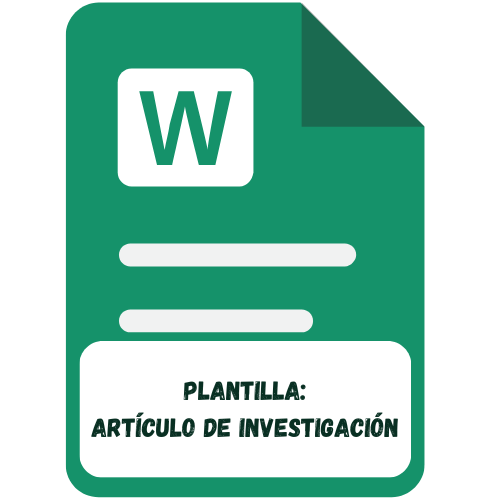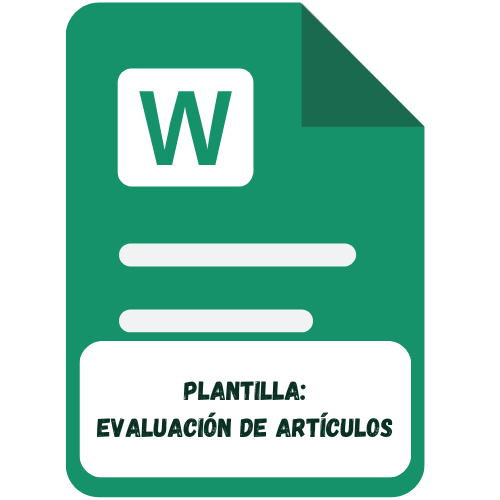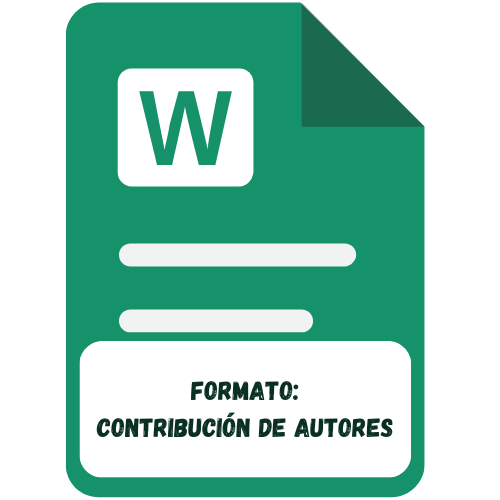Uso de microorganismos eficientes en la producción de compost de residuos sólidos orgánicos del distrito de Rupa Rupa
DOI:
https://doi.org/10.69507/Palabras clave:
Microorganismos eficientes (EM), Compostaje, Granulometría, Calidad del compostResumen
El presente estudio evaluó el efecto de los microorganismos eficientes (EM) en el proceso de compostaje de residuos orgánicos, empleando el diseño completo al azar (DCA). Los resultados evidenciaron que la incorporación de EM favoreció una granulometría más homogénea, con mayor proporción de material fino (80,37 % en T1; 73,49 % en T2; 59,23 % en T3). Las temperaturas iniciales más elevadas en los tratamientos con EM (45,00 – 47,33 °C) reflejaron una intensa actividad microbiana y una fase termofílica más marcada, lo que aceleró la descomposición de la materia orgánica. Posteriormente, la rápida estabilización térmica indicó una transición eficiente hacia la etapa de maduración. El pH aumentó progresivamente hasta valores óptimos para compost maduro (8,61 – 8,67), evidenciando la neutralización de la acidez inicial. Asimismo, los parámetros de calidad del compost final (33,29 – 36,83 % de materia orgánica, con niveles adecuados de nitrógeno, fósforo y potasio) cumplieron con los estándares internacionales de la FAO y normas de referencia en calidad de compost. En conclusión, la aplicación de EM optimizó tanto la velocidad del proceso como la calidad del abono obtenido, consolidándose como una alternativa sostenible y eficaz para la gestión y valorización de residuos orgánicos en contextos agrícolas.
Descargas
Referencias
Aguilar-Paredes, A., Valdés, G., Araneda, N., Valdebenito, E., Hansen, F., & Nuti, M. (2023). Microbial community in the composting process and its positive impact on the soil biota in sustainable agriculture. Agronomy, 13(2), 542. https://doi.org/10.3390/agronomy13020542
Awasthi, M. K., Zhang, Z., Wang, Q., Shen, F., Li, R., & Lahori, A. H. (2020). Emerging role of compost biostabilization in organic waste management: Process parameters and compost quality assessment. Bioresource Technology, 302, 122871. https://doi.org/10.1016/j.biortech.2020.122871
Bernal, M. P., Alburquerque, J. A., & Moral, R. (2017). Composting of animal manures and chemical criteria for compost maturity assessment. Bioresource Technology, 100(22), 5444–5453. https://doi.org/10.1016/j.biortech.2009.05.014
Bernal, M. P., Alburquerque, J. A., & Moral, R. (2023). Compost quality parameters for sustainable agriculture: Advances and challenges. Journal of Environmental Management, 342, 118176. https://doi.org/10.1016/j.jenvman.2023.118176
Brinton, W. F. (2000). Compost quality standards & guidelines. Woods End Research Laboratory. https://compost.css.cornell.edu/Brinton.pdf
Bustamante, M. A., Restrepo, A. P., Alburquerque, J. A., Pérez-Murcia, M. D., & Bernal, M. P. (2020). Recycling of organic wastes through composting: Process performance and compost application in agriculture. Sustainability, 12(10), 4183. https://doi.org/10.3390/su12104183
Castillo, L. C. (2020). Evaluación de la calidad del compost obtenido a partir de residuos orgánicos y microorganismos eficaces (EM) en el distrito de Huayucachi, Huancayo, 2019 [Tesis de pregrado, Universidad Continental]. https://repositorio.continental.edu.pe/handle/20.500.12394/8245
Dhakal, G., Fujino, T., Magar, S. T., & Araki, Y. (2025a). Optimizing nitrogen and water use efficiency in wheat cropping systems through integrated application of biochar and Bokashi under different irrigation regimes. Nitrogen, 6(2), 21. https://doi.org/10.3390/nitrogen6020021
Dhakal, G., Fujino, T., Magar, S. T., & Araki, Y. (2025b). Co-Application of Bokashi and Biochar Alleviates Water Stress, Improves Soil Fertility and Enhances Wheat Production Under Water-Deficit Conditions. Soil Systems, 9(2), 33. https://doi.org/10.3390/soilsystems9020033
Ding, S., Wu, D., Zhang, X., & Li, Y. (2025). Comprehensive analysis of compost maturity differences in three typical organic wastes. Waste Management, 193, 250-260. https://doi.org/10.1016/j.wasman.2024.12.011
Dong, W., Zhou, R., Li, X., Yan, H., Zheng, J., Peng, N., & Zhao, S. (2024). Effect of simplified inoculum agent on performance and microbial community in industrial-scale cow-manure composting. Bioresource Technology, 393, 130097. https://doi.org/10.1016/j.biortech.2023.130097
ECN-QAS. (2018). European quality assurance scheme for compost and digestate (3rd ed.). European Compost Network. https://www.compostnetwork.info/wordpress/wp-content/uploads/180711_ECN-QAS-Manual_3rd-edition_keyed-1.pdf
European Compost Network Quality Assurance Scheme – ECN-QAS. (2018). European quality assurance for compost and digestate. https://www.compostnetwork.info/ecn-qas
Gao, Y., Zhang, C., Tan, L., Wei, X., Li, Q., Zheng, X., Liu, F., Wang, J., & Xu, Y. (2022). Full-scale composting process using swine manure to meet maturity and nutritional standards. Frontiers in Bioengineering and Biotechnology, 10, 928032. https://doi.org/10.3389/fbioe.2022.928032
Gómez, K. A., & Gómez, A. A. (1984). Statistical procedures for agricultural research (2nd ed.). Wiley.
Greff, B., Bernstad Saraiva Schott, A., & Taffarel, S. R. (2022). Influence of microbial inoculants on co-composting of lignocellulosic crop residues with farm animal manure: A review. Journal of Environmental Management, 302, 113975. https://doi.org/10.1016/j.jenvman.2021.113975
Hernández, R., Fernández, C., & Baptista, P. (2014). Metodología de la investigación (6.ª ed.). McGraw-Hill.
Instituto Nacional de Normalización de Chile (INN). (2005). NCh 2880.Of2005: Norma de calidad del compost. Santiago de Chile: INN. https://miros.cl/wp-content/uploads/2020/01/NCh_2880_Compost_Clasificación.pdf
Instituto Nacional de Normalización de Chile (INN). (2020). NCh 2880:2020: Compost – Requisitos de calidad y clasificación. Santiago de Chile: INN. https://es.scribd.com/document/349938983/NCh2880-Norma-Chilena-de-Calidad-de-Compost
Jiao, Z., Zhang, L., Zhang, A., Li, R., Zhang, K., Wu, Z., Kang, Z., Wei, Y., Zhang, L., Wang, Y., Shi, X., & Li, J. (2024). Mature compost enhanced the harmlessness level in co-composting swine manure and carcasses in large-scale silo reactors. Frontiers in Microbiology, 15:1494332. https://doi.org/10.3389/fmicb.2024.1494332
Jiao, Z., Chen, H., Li, Y., Wang, X., & Liu, J. (2024). Mature compost enhances harmlessness and promotes stability in animal-derived waste composting. Scientific Reports, 14(1), 1172. https://doi.org/10.1038/s41598-024-53718-3
Kumar, M., Ou, Y. L., & Lin, J. G. (2020). Co-composting of green waste and food waste at low C/N ratio for the development of mature and stable compost. Bioresource Technology, 307, 123244. https://doi.org/10.1016/j.biortech.2020.123244
Lavagi, V., Kaplan, J., Vidalakis, G., Ortiz, M., Rodriguez, M. V., Amador, M., Hopkins, F., Ying, S., & Pagliaccia, D. (2024). Recycling agricultural waste to enhance sustainable greenhouse agriculture: Analyzing the cost-effectiveness and agronomic benefits of Bokashi and biochar byproducts as soil amendments in citrus nursery production. Sustainability, 16(14), 6070. https://doi.org/10.3390/su16146070
Lew, P. S., Yong, K. T., & Ang, W. L. (2021). Optimization of Bokashi-composting process using a smart composting bin. Sensors, 21(8), 2847. https://doi.org/10.3390/s21082847
Liu, N., Liu, Z., Wang, K., Zhao, J., Fang, J., Liu, G., Yao, H., & Pan, J. (2024). Comparison analysis of microbial agent and different compost materials on microbial community and nitrogen transformation genes dynamic changes during pig manure composting. Bioresource Technology, 395, 130359. https://doi.org/10.1016/j.biortech.2024.130359
Lu, M., Hao, Y., Lin, B., Huang, Z., Zhang, Y., Chen, L., Li, K., & Li, J. (2024). The bioaugmentation effect of microbial inoculants on humic acid formation during co-composting of bagasse and cow manure. Environmental Research, 252, 118604. https://doi.org/10.1016/j.envres.2024.118604
Ludeña, M. (2019). Efecto de los microorganismos eficientes en la descomposición de los desechos sólidos orgánicos más estiércol de ganado vacuno en el distrito de José Gálvez [Tesis de pregrado, Universidad Nacional de Cajamarca]. https://repositorio.unc.edu.pe/handle/20.500.14074/2784
Manea, E. E., Bumbac, C., Dinu, L. R., Bumbac, M., & Nicolescu, C. M. (2024). Composting as a sustainable solution for organic solid waste management: Current practices and potential improvements. Sustainability, 16(15), 6329. https://doi.org/10.3390/su16156329
Melendrez Moreto, N. A., & Sánchez Delgado, J. (2019). Compostaje de residuos sólidos orgánicos utilizando microorganismos eficientes en el distrito de Cacatachi [Tesis de licenciatura, Universidad Peruana Unión]. https://repositorio.upeu.edu.pe/handle/20.500.12840/1777
Mironov, V., Gad, M., & Shestopalov, A. (2024). Enhancing aerobic composting of food waste by adding bacterial and fungal strains. Frontiers in Microbiology, 15, 1293273. https://doi.org/10.3389/fmicb.2024.1293273
Montgomery, D. C. (2017). Design and analysis of experiments (9th ed.). Wiley.
Munizaga-Párraga, D. (2023). Producción de compost a partir de desechos sólidos orgánicos domésticos mediante el uso de microorganismos eficientes. InvestigAR, Universidad Técnica de Manabí. https://www.investigarmqr.com/ojs/index.php/mqr/article/view/313
Nie, H., Li, C., Jia, Z., Cheng, X., Liu, X., Liu, Q., Chen, M., Ding, Y., & Zhang, J. (2024). Microbial inoculants using spent mushroom substrates as carriers improve soil multifunctionality and plant growth by changing soil microbial community structure. Journal of Environmental Management, 370, 122726. https://doi.org/10.1016/j.jenvman.2024.122726
Nie, H., Zhou, J., Wang, L., Liu, Q., & Chen, Y. (2024). Microbial inoculants using spent mushroom substrates as solid carriers: Effects on soil multifunctionality and plant growth. Journal of Environmental Management, 350, 119987. https://doi.org/10.1016/j.jenvman.2024.119987
Poccori, R. (2022). Microorganismos eficaces, enriquecidos con roca fosfórica en la calidad del compost de residuos sólidos orgánicos municipales, Chuquibambilla Grau [Tesis de pregrado, Universidad Nacional Micaela Bastidas de Apurímac]. https://repositorio.unamba.edu.pe/bitstream/handle/UNAMBA/1212/T_010.pdf?sequence=1&isAllowed=y
Pérez, J. A. (2020). Evaluación de la calidad del compost y efecto de la implementación de microorganismos benéficos (Bio-Heral) en la producción de abono. https://repository.unad.edu.co/jspui/bitstream/10596/37222/3/JAPEREZAG.pdf
Roy, D., Gunri, S. K., & Pal, K. K. (2024). Rapid composting of groundnut residues through novel microbial approaches. https://pubmed.ncbi.nlm.nih.gov/39445036/
Roy, D., Ghosh, S., Banerjee, R., & Bera, P. (2024). Rapid composting of groundnut residues through novel microbial approaches. Frontiers in Microbiology, 15, 1223456. https://doi.org/10.3389/fmicb.2024.1223456
Tiquia, S. M. (2005). Microbial transformation of nitrogen during composting. In H. Insam, N. Riddech, & S. Klammer (Eds.), Microbiology of composting (pp. 237–246). Springer. https://doi.org/10.1007/3-540-26603-8_21
U.S. Composting Council. (2017). Compost characteristics and quality standards. U.S. Composting Council. https://www.compostingcouncil.org/page/CompostCharacteristics
University of Maine. (2016). Compost report interpretation guide. University of Maine Soil Testing Service. https://umaine.edu/soiltestinglab/wp-content/uploads/sites/227/2016/07/Compost-Report-Interpretation-Guide.pdf
Vidal, F. (2023). Diversidad microbiana y calidad del compost producido con inoculación de microorganismos provenientes de hojarasca y madera.
Wang, L., Chen, J., & Li, X. (2024). Microbe-aided thermophilic composting accelerates manure stabilization and improves compost quality. Frontiers in Microbiology, 15, 1472922. https://doi.org/10.3389/fmicb.2024.1472922
Wang, X., Cui, H., Shi, J., Zhao, X., Zhao, Y., & Wei, Z. (2024). Relationship between pH, electrical conductivity and compost maturity during the composting process. Bioresource Technology, 350, 126890. https://doi.org/10.1016/j.biortech.2022.126890
Wang, Q., Liu, Y., Zhang, T., Zhao, X., & Li, G. (2024). Influence of biochar-based microbial agents on post-composting of food waste. Environmental Research, 242, 117844. https://doi.org/10.1016/j.envres.2024.117844
Wang, Qianqi; Jiang, Sinan; Li, Na; Lei, Jiali; Gong, Xiaoyan; Li, Guoxue; Luo, Wenhai. (2025). Influence of biochar-based microbial agents on post-consumption food waste composting. Environmental Research, 272, 121217. https://doi.org/10.1016/j.envres.2025.121217
Xie, Y., Wu, P., Qu, Y., Guo, X., Zheng, J., Xing, Y., Zhang, X., & Liu, Q. (2025). The evolution of nutrient and microbial composition and maturity during the composting of different plant-derived wastes. Biology, 14(3), 268. https://doi.org/10.3390/biology14030268
Xu, P., Guo, R., & Li, Y. (2024). Microbial agents obtained from tomato straw composting improve agro-organic waste composting performance. Ecotoxicology and Environmental Safety, 275, 115428. https://doi.org/10.1016/j.ecoenv.2023.115428
Yang, Q., Zhang, S., Li, X., Rong, K., & Jiang, L. (2023). Effects of microbial inoculant and additives on pile composting of cow manure. Frontiers in Microbiology, 13, 1084171. https://doi.org/10.3389/fmicb.2022.1084171
Yang, Y., Chen, W., Zhang, Y., & Li, S. (2021). Selection of sensitive seeds for evaluation of compost maturity with the seed germination index. Waste Management, 120, 89–97. https://doi.org/10.1016/j.wasman.2020.10.014
Zhang, Z., Wang, J., & Zhao, H. (2024). Effective microorganism combinations improve the quality of compost-bedded pack products: Bacteria–fungi interactions. Animals.
Zhou, Y., Li, H., & Chen, W. (2020). Development of a domestic composting device inoculated with microbial consortia to improve germination index and reduce costs. Waste Management, 105, 432-441. https://doi.org/10.1016/j.wasman.2020.02.015
Zhou, L., Liu, H., & Sun, X. (2023). Effects of bacterial inoculation on lignocellulose degradation and microbial properties during cow-dung composting. Bioengineered, 14(1), 2185945. https://doi.org/10.1080/21655979.2023.2185945
Zhou, Y., Chen, H., & Li, X. (2022). Recent trends and advances in (vermi-)composting: Modelling, supplements y reactores. Bioresource Technology, 360, 127620. https://doi.org/10.1016/j.biortech.2022.127620
Zhou, L., Zhang, Z., Wang, J., Liu, H., & Sun, X. (2025). Microbial inoculation influences bacterial and autotrophic communities and improves compost quality. Resources, Conservation & Recycling Advances, 18, 200256. https://doi.org/10.1016/j.rcradv.2025.200256
Zhu, L., Wang, G., & Zhou, X. (2023). Inoculation enhances directional humification by promoting aromaticity during composting. Chemosphere, 326, 138511. https://doi.org/10.1016/j.chemosphere.2023.138511
Zhang, Z., Wang, J., & Zhao, H. (2024). Effective microorganism combinations improve the quality of compost-bedded pack products: Bacteria–fungi interactions. Animals.
Zhou, Y., Li, H., & Chen, W. (2020). Development of a domestic composting device inoculated with microbial consortia to improve germination index and reduce costs. Waste Management, 105, 432-441. https://doi.org/10.1016/j.wasman.2020.02.015
Zhou, L., Liu, H., & Sun, X. (2023). Effects of bacterial inoculation on lignocellulose degradation and microbial properties during cow-dung composting. Bioengineered, 14(1), 2185945. https://doi.org/10.1080/21655979.2023.2185945
Zhou, Y., Chen, H., & Li, X. (2022). Recent trends and advances in (vermi-)composting: Modelling, supplements y reactores. Bioresource Technology, 360, 127620. https://doi.org/10.1016/j.biortech.2022.127620
Zhou, L., Zhang, Z., Wang, J., Liu, H., & Sun, X. (2025). Microbial inoculation influences bacterial and autotrophic communities and improves compost quality. Resources, Conservation & Recycling Advances, 18, 200256. https://doi.org/10.1016/j.rcradv.2025.200256
Zhu, L., Wang, G., & Zhou, X. (2023). Inoculation enhances directional humification by promoting aromaticity during composting. Chemosphere, 326, 138511. https://doi.org/10.1016/j.chemosphere.2023.138511
Descargas
Publicado
Número
Sección
Licencia

Esta obra está bajo una licencia internacional Creative Commons Atribución-NoComercial-CompartirIgual 4.0.
Los autores que publican en esta revista aceptan los siguientes términos:
a. Los autores conservan los derechos de autor y conceden a la revista el derecho de publicación con la obra, simultáneamente licenciada bajo una licencia de Creative Commons que permite a otros compartir el trabajo con un reconocimiento de la autoría del trabajo y la publicación inicial en esta revista.
b. Los autores pueden celebrar acuerdos contractuales adicionales separados para la distribución no exclusiva de la versión publicada de la obra de la revista (por ejemplo, publicarla en un repositorio institucional o publicarla en un libro), con un reconocimiento de su publicación inicial en esta revista.
c. Se permite y anima a los autores a publicar su trabajo en línea (por ejemplo, en repositorios institucionales o en su sitio web) antes y durante el proceso de presentación, ya que puede conducir a intercambios productivos, así como una mayor citación del trabajo publicado (ver efecto del acceso abierto).















